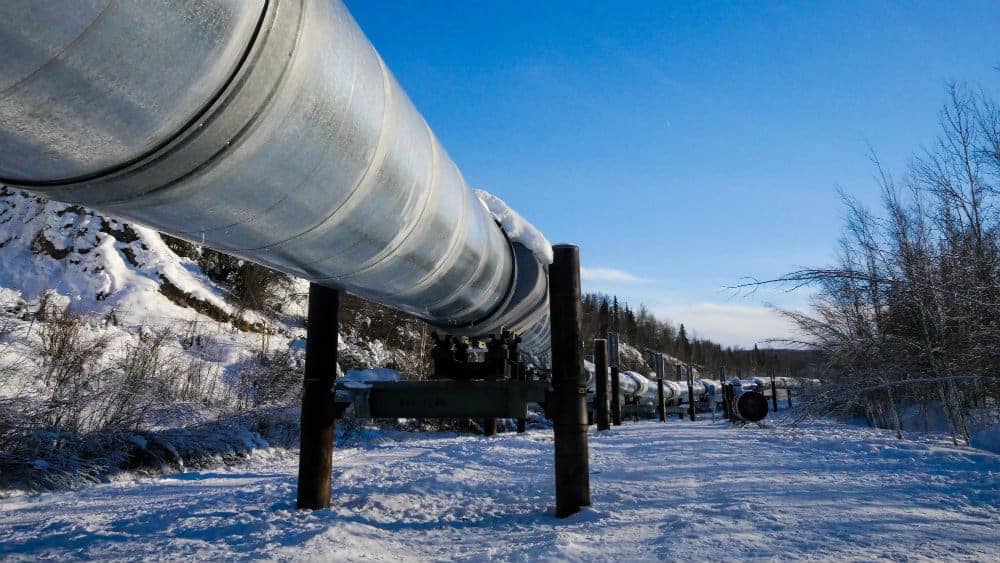
Enbridge (TSX:ENB)(NYSE:ENB) stock dropped 5.9% since it posted strong third-quarter earnings on November 5. Why do stocks fall, despite strong earnings figures? There are multiple reasons for it. It’s possible the guidance was weak, peers reported weaker earnings, some macro event, or just plain profit-booking by investors. So, what happened in Enbridge’s case?
Before I jump to the reason for the dip, let’s first see what Enbridge showed in its earnings.
Key takeaways from Enbridge’s earnings
Enbridge is a pipeline operator that earns toll money for allowing utilities to transit oil and natural gas through its pipelines. On one side, the company spends capital on building and maintaining pipelines and, on the other side, earns regular cash flows through toll money. The company’s strength is that it maintains strong cash flows and regularly repays debt while keeping a close check on costs.
In the third quarter, three key financial metrics showed strong performance:
- Adjusted EBITDA surged about 10% year over year to $3.3 billion
- Earnings per share (EPS) surged 23% to $0.59
- Distributable cash flow (DCF) surged 9.5% to $2.3 billion, or $1.13 per share
The above three metrics are a result of increased volumes across main pipelines and cost containment. Enbridge improves its profits by improving its cost efficiency and increasing its toll money. The company expects oil and natural gas demand to surge in the fourth quarter, as the global economy is currently facing an energy crisis. Demand surged, but supply didn’t, thereby inflating oil and natural gas prices.
Why did Enbridge stock dip?
Enbridge’s management stated that the company is on track to achieve its 2021 full-year DCF-per-share guidance of $4.70 to $5.00, up 0-7% from last year. The DCF growth determines Enbridge’s dividend growth for 2022, as it pays out 60-70% of this cash flow in dividends.
If the company reports DCF below the midpoint of $4.85, the company’s dividend-growth rate might slow from its average annual rate of 10%. Even in 2020, the company grew its dividend by 3%, after increasing it by 9.8% in 2019. Its peer, TC Energy, reduced its dividend-growth rate outlook from 5-7% to 3-5% per year. The fear of slowing dividend growth is probably making investors cautious.
Moreover, Enbridge has temporarily shut one of the two West coast natural gas pipelines to prevent any damage from heavy flooding in British Columbia. The temporary shutdown of the pipeline might impact Enbridge’s DCF, but it is better than facing the risk of any damage to the pipeline.
Another reason for the 5.9% dip is a correction after a major surge. Enbridge stock surged almost 4% ahead of earnings. It almost entered overbought category with a Relative Strength Index (RSI) of 69. Once it delivered strong earnings, short-term traders booked profits, as there was a huge selling activity a day after the earnings.
Enbridge’s future of dividend growth
The slowdown in dividend growth during 2020 and 2021 is understandable, as the pandemic reduced oil and natural gas volumes. Enbridge leveraged this opportunity to expedite the maintenance of major pipelines. The company has put into service $8 billion worth of projects. It is on track to bring another $2 billion worth of projects online by year-end. The addition of these projects will bring new sources of toll money and enhance cash flows next year.
However, the 2022 dividend growth depends on the 2021 DCF, which is relatively weak. So, investors could likely benefit from this year’s capital projects in 2023 in the form of high dividend growth.
Is it a good time to buy this stock?
The recent dip has created an opportunity to buy a good dividend stock for a discount. January and early February are the peak season for Enbridge; its stock typically surges 8-15%. This has been the trend for the last three years, and I am expecting a similar trend this year. This is a good time to buy the stock and lock in a 6.59% dividend yield and about 10% capital appreciation.






